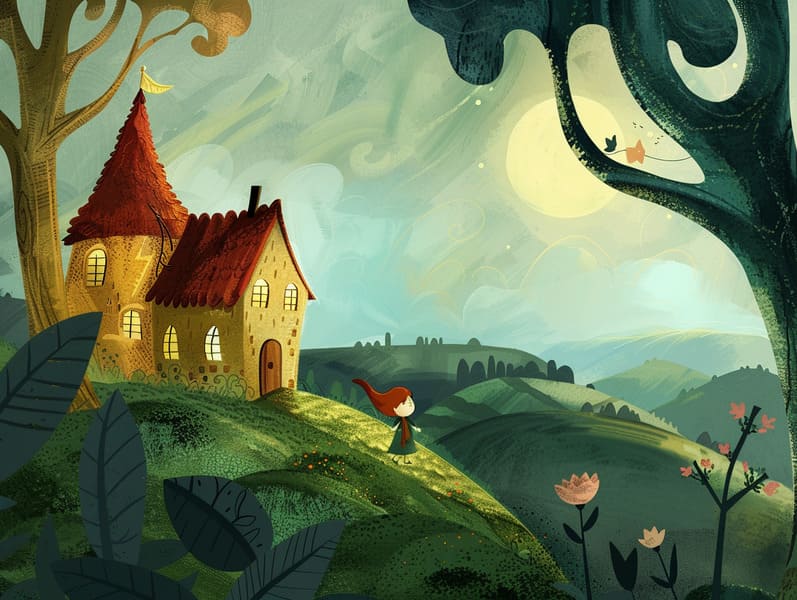The Formation of Old Fairy Tales and Its Invariable Spell.
The Formation of Old Fairy Tales and Its Invariable Spell.
Blog Article

Famous fairy tales have old origins. These tales have been whispered from one generation to the next long before they were ever put on paper. They sprang from a variety of civilizations, including Eastern traditions. They were initially passed along among grown-ups, often carrying themes and messages reflective of the societal norms and beliefs of the time.
Jacob and Wilhelm Grimm, Jacob and Wilhelm Grimm, were among the first to assemble many of these beloved stories. Their volume, "Grimm's Fables," included narratives like "Ashenputtel," "Hansel and Grethel," and "Schneewittchen," which have since become pillars in the world of children's fairy tales. Similarly, Hans Andersen's fanciful stories, such as "The Mermaid," and "The Duckling that Could," have touched hearts worldwide, ensuring their place in the pantheon of classic fairy tales.
Despite their historical roots, these stories remain as impactful as ever, especially as children's bedtime stories. These fantastical tales are now available in numerous formats, including beautifully illustrated books, captivating animations, and digital fairy tales.
Their persistent charm can be ascribed to several captivating elements:
Important Morals: Timeless fairy tales often whisper important moral lessons. Tales like "The Wolf and the Liar" teach the merit of sincerity, while "The Tortoise and the Hare" emphasize the benefits of determination and meekness. These tales offer young readers clear distinctions between correct and incorrect, helping to shape their moral compass in a mild yet deep way.
Kindness and Comprehension: Ancient fairy tales frequently illustrate beings facing challenges and struggles, urging listeners to sympathize with their struggles and boost their triumphs. For instance, "Beauty's Beast" conveys the significance of looking beyond appearances to recognize the true being of a soul, building awareness and discernment.
Cultural Understanding: Many timeless fairy tales are rooted in the cultural contexts from which they sprang. Learning from these narratives can provide captivating looks into different traditions, promoting a sense of world appreciation and discernment.
Fantasy and Imagination: The supernatural elements in traditional fairy tales—enchanted lands—invigorate children’s innovative ideas. These narratives carry readers to fantasy realms, enlivening innovative ideas and a sense of magic that persists a lifetime.
Old fairy tales are not only spellbinding but also instructive. They work as whimsical tools in fostering various mental and emotional abilities in little ones. When classic fairy tales are voiced, they develop language development by bringing new linguistic elements and elaborate sentence structures. This practice also strengthens hearing perception and attentiveness, as young ones focus on every detail, ready to see what happens next.
Furthermore, examining the themes and characters of timeless fairy tales can develop thinking skills and reasoning skills. Kids are shown to find patterns, make predictions, and grasp cause and effect. These examinations also advance kids verbalize their thoughts and feelings, fostering their emotional intelligence.
In today’s modern era, the prevalence of digital storybooks has made these fairy tales more accessible than ever. Internet resources and mobile apps feature comprehensive collections of ancient fairy tales that can be seen or played anytime, anywhere. Fairy tales read aloud are particularly well-liked, giving an fascinating method for little ones to savor these bewitching tales. Voice books and read-to-me videos carry characters and settings to life, often accompanied by entrancing background sounds and soundtracks that enhance the narrative journey.
The unending appeal of traditional fairy tales lies in their ability to alter to modern times while preserving their core messages. Contemporary adaptations of these fairy tales often integrate more representative protagonists and modern settings, making them accessible to today’s audience. However, the central morals of gallantry, humanity, and fair play remain unchanged, continuing to affect children of all ages.
Classic fairy tales also offer a sense of protection and knownness. They introduce a structured narrative with a recognizable beginning, middle, and end, often concluding with the ending of conflicts and the triumph of truth read more over falsehood. This regularity can be solacing for kids, providing a sense of invariability in an unstable world.
Ancient fairy tales continue to bewitch and edify new generations, maintaining their captivation and meaningfulness in modern society. As kids' bedtime tales, they make accessible a perfect blend of delight and instruction, backing moral values, empathy, and creativity. The accessibility of online storybooks and the favor of fairy tales read out loud secure that these traditional narratives remain accessible to new generations.
By conserving and releasing these tales, we continue to cherish the rich tapestry of tales and cultural heritage. Whether you are seeing a vibrantly illustrated book, exploring a online collection, or hearing an audio story, the loveliness of classic fairy tales is always within reach. These stories reveal of the persistent nature of tales and its ability to unify us across centuries and lands.
If you are exploring a beautifully illustrated book, discovering a virtual library, or listening on an voice book, the magic of Grimm's fairy tales is always within reach.
These tales remind us of the unending power of tales and its ability to draw us together across generations and cultures, forging a link that delights and instructs alike.